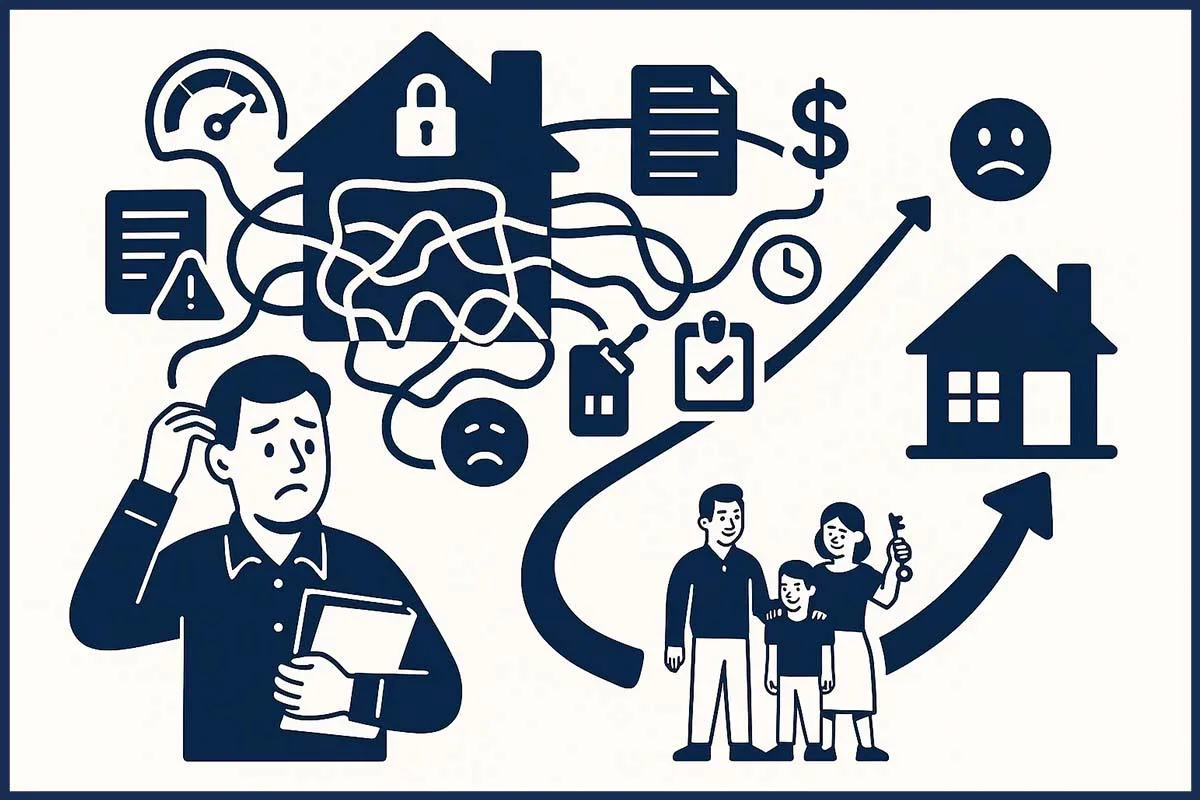
Why Banks Make Home Buying Harder Than It Should Be
Introduction
For many aspiring homeowners, the journey to buying a home begins with hope and excitement. But that optimism often fades as they encounter the harsh realities of dealing with traditional banks. Strict requirements, endless paperwork, and ever-changing regulations can turn what should be a simple process into a stressful and overwhelming experience.
At Ameripath USA, we’ve seen firsthand how the banking system creates unnecessary barriers for hardworking people who simply want to own a home.
1. Strict Credit Score Requirements
Banks heavily rely on credit scores to determine mortgage eligibility. If your score falls below their rigid standards — even by a few points — you may face higher interest rates, larger down payment requirements, or outright denial. Many Americans who pay their bills on time but carry old medical debt or temporary financial hardships find themselves disqualified despite being responsible payers.
2. Income Verification Challenges
Traditional lenders often require extensive income verification, tax returns, W-2s, and employment history stretching back years. This can be especially difficult for:
Self-employed individuals
Gig workers
Small business owners
Contractors and freelancers
Even with steady income, these applicants may struggle to prove their earnings in a way that satisfies the bank’s rigid underwriting standards.
3. High Down Payment Demands
Banks commonly require 10%, 20%, or more as a down payment, especially for borrowers with less-than-perfect credit. For many families, saving tens of thousands of dollars while covering rent, bills, and living expenses is simply not realistic. This prevents otherwise qualified buyers from ever getting started.
4. Endless Paperwork and Delays
The mortgage process often drags on for weeks or even months. Buyers are asked repeatedly for updated documents, letters of explanation, and clarification on minor details. Underwriters may request bank statements, pay stubs, tax records, employment verification, gift letters, and more — sometimes multiple times — before issuing final approval.
5. Appraisal and Inspection Hurdles
Even after pre-approval, banks require appraisals and inspections. If the appraisal comes in lower than the sale price, the bank may refuse the loan or demand that the buyer cover the difference out-of-pocket. Inspection issues can trigger delays or further negotiations, creating additional stress.
6. Changing Lending Standards
Lending guidelines often shift based on market conditions, government regulations, or the bank's internal policies. A buyer who qualified last month may find themselves disqualified the next due to policy changes beyond their control.
7. Emotional Toll on Buyers
The combination of uncertainty, repeated requests, and constant scrutiny takes a real emotional toll on buyers. What should be an exciting step toward homeownership often becomes a frustrating, demoralizing process that discourages many from even trying.
Conclusion: There Is a Better Way
At Ameripath USA, we believe homeownership should be achievable — not out of reach. That’s why we offer seller financing solutions that eliminate the traditional banking maze. We look at the full financial picture — not just credit scores — and provide simple, transparent terms that allow buyers to move forward with confidence.
If you're tired of banks making it harder than it should be, contact Ameripath USA today to learn how we can help you achieve the dream of homeownership.
